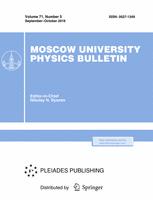The controllability problem for two-dimensional dissipative tunneling in the system of tunnel-coupled quantum dots (a quantum molecule), interacting quantum molecules, and the system “ACM/CTM cantilever tip-quantum dot” simulated by a 2D oscillator potential in a heat bath and an external electric field is investigated. The obtained results qualitatively correspond to the separate experimental volt-ampere characteristics (VACs) for the system “platinized ACM/CTM cantilever tip-gold quantum dot” obtained at Scientific-Research Physical-Technical Institute with Nizhnii Novgorod State University. The previously-predicted 2D tunnel bifurcations with dissipation for the case of interacting particles tunneling in parallel are found to be experimentally observed and stable.
82.20.Xr Quantum effects in rate constants
03.65.Xp Tunneling, traversal time, quantum Zeno dynamics
31.15.Gy Semiclassical methods
$^1$Faculty of Physics, Moscow State University, Moscow, 119991, Russia
$^2$University of Wyoming, Laramie, Wyoming, USA
$^3$Physicotechnical Research Institute, Nizhni Novgorod State University, Nizhni Novgorod, 603950, Russia
$^4$Penza State University, Penza, 440026, Russia
$^5$Research Institute of International Medical Center of Japan, Tokyo, Japan



